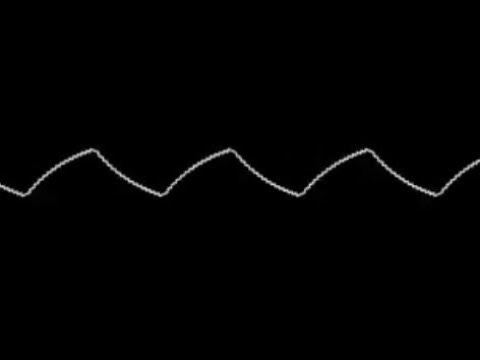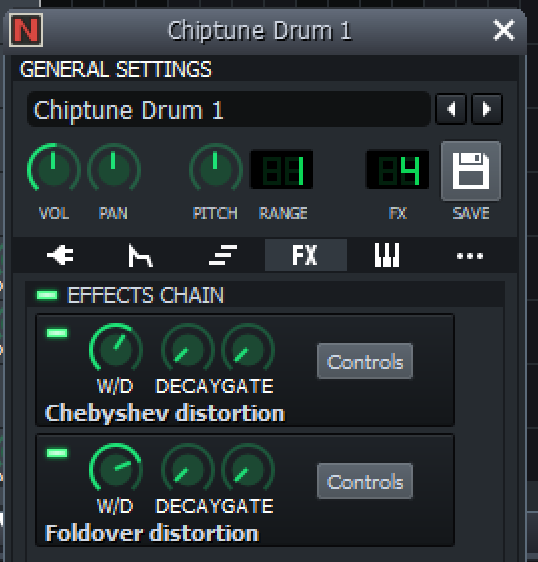One of the things that has kind of struck me in the last few hours is that when you are composing classical music for an orchestra, you have only got these instruments and you have only got this many of them and that is what you have to work with so whatever you are going to do is going to be done with that particular sonic palette.
Also, you should probably use all of it? Like you don’t want anybody sitting there with parts that look like this.
Now, I am not delusional enough to try and compose for an orchestra, but I am smart enough to understand that you can’t play chords on a clarinet. And whenever I am doing any kind of music for something I want to sound like a particular kind of instrument — I want an epic brass section sound in the piece I’m working on now — I always go check on some things like, how is this instrument played? What is its normal range? Can it play multiple notes at once? Can it make large leaps between notes, or does it have to go up in smaller steps?
So I have been watching a bunch of YouTube videos about playing trumpets and tubas and horns and trombones, and about composing for the brass section of an orchestra, and I’ve been sort of vaguely thinking that I might not be after an orchestral sound so much as a marching band, so I am going to have to go look at that to some degree.
Now, what I have found with this piece I am working on is that it is… actually pretty good. Like, it’s catchy. It gets in my head and stays there and I like it. Which is great! That’s exactly the sort of thing I want from a video game soundtrack. And I am compelled to wonder, why? Why did this go to such a good place this time, when I am typically stuck making little two- and four-bar loops that never evolve at all?
What my music usually does is either loop forever and be boring as shit, or I do the little two- or four- bar section and then make a transition that leads into another two- or four-bar section and then that just goes on over and over so instead of one loop thirty times I have twenty loops with little transitions between them and it is just absolute chaos.
And I think what happened here is that I went okay, I want to start with something that sounds like it could be on the original NES. That shitty Ricoh 2A03 chip with only two square waves and a triangle wave and a noise channel. The triangle wave isn’t even very good, it’s got a weird slope so it’s weirdly smoothed into a sort of half-sine waveform.
Technically the 2A03 also has a fifth digital sample channel but honestly there is just not enough RAM in the NES to use it for much of anything. But because that was the initial sound I wanted, I restricted myself to the two square waves — one for bass, one for lead — and layered the triangle with noise to produce a fair approximation of a kick drum. Which was nearly inaudible so I cheated and added two chained distortion plugins to do Eddie van Halen’s “brown sound” thing with it.
Now, typically, I am not working with a simple basic stripped-down synthesiser like this one. I am almost always working with something that pretends to be a vintage analog device with fifty knobs and dials and sliders and buttons.
And because I am working with something like this… I have a whole bunch of them… my sonic palette is effectively infinite. There is so much I can do with this control panel, I can tweak parameters and fine-tune my patch for hours. Then I run out of time to work on the music, and I go “well I will do the composition part next time.”
But guess what happens next time.
That’s right! I open up the synth and go “actually I would like something that sounds a little different” and then I tweak parameters and fine-tune my patch for hours until I am out of time and this is just not going to be productive at all ever.
But working with the NES limitations, having to do the whole piece with just bass and lead and a kick drum (even if I did cheat on the kick drum), made me stop fucking around and write some damn music.
So I think what I need to do is kind of… define my orchestra. Put the band together. When I was in real bands with real musicians, each of us had our instrument we played and that was what we played. And while there’s a lot of flexibility and power in being the solo producer-musician, there’s also that paralysis where you have to choose the things that go into your music and without some kind of real-world constraint you can just spin your wheels forever.
I think I need to do that with my synth patches. Just kind of, lay out my patch library and my synth collection and decide which patches on which synths are going to be in the mix. Fit everything together so they all have roles to fill, and there’s room for each of them, and they occupy their own distinctive parts of the sonic space without stepping all over each other.
It’s like arranging a tool belt. A tool box can have everything in it, even if you hardly ever use it. But a tool belt has to be just what you’re going to use on this job, right now. And most of what you have on it is the same thing every time, the stuff you use frequently whatever you’re doing.
Anyway that’s what I’m thinking, and it’s applicable to lots of other creative stuff. Selecting your tools can make it easier to get started, which makes it easier to get shit done.





